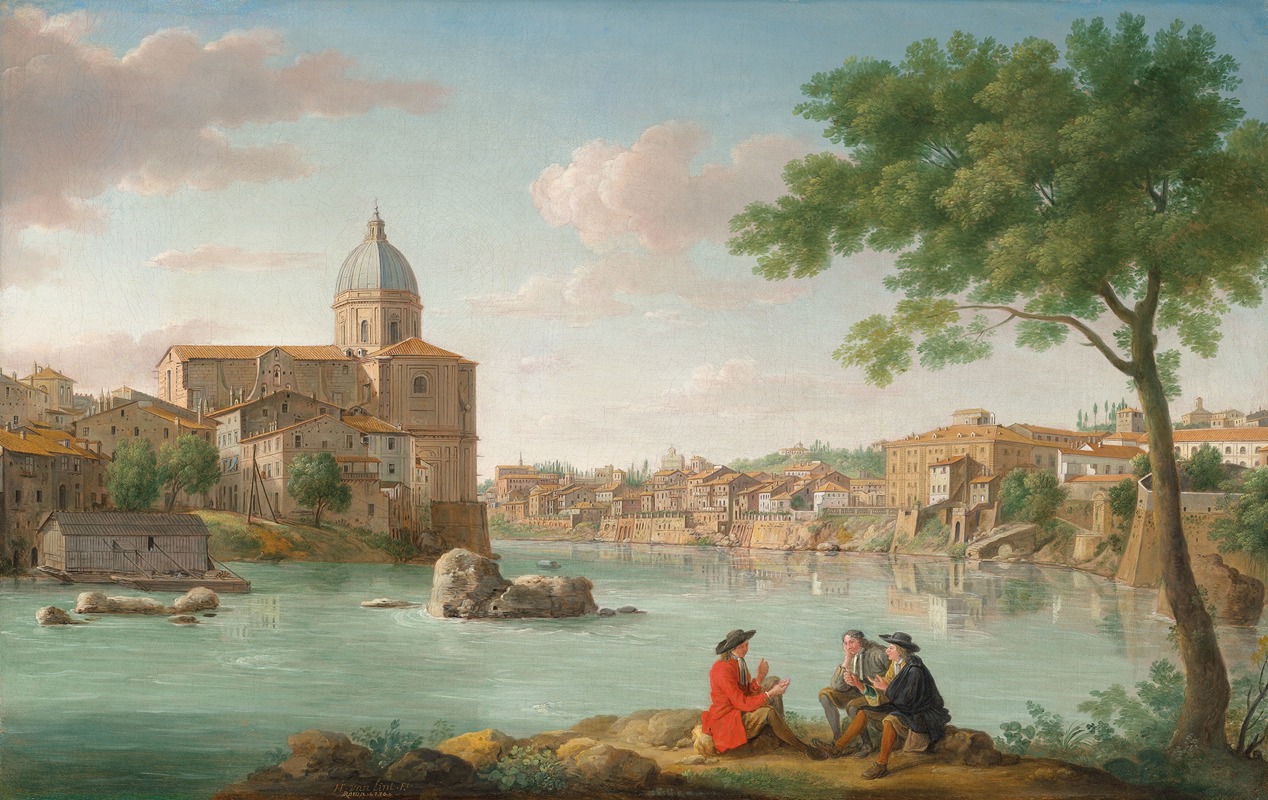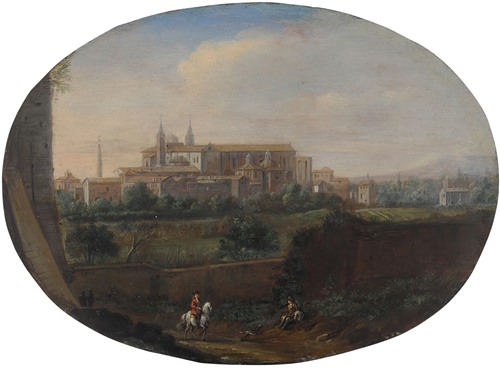
Hendrik Frans van Lint was a Flemish landscape and vedute painter who was part of the group of Flemish and Dutch painters active in Rome. He was one of the leading landscape painters in Rome in the first half of the 18th century and his patrons included Rome's old aristocratic families as well as European travellers on their Grand Tour.
Hendrik Frans van Lint was born in Antwerp, the son of the history painter Pieter van Lint and his second wife Anna Moeren (Moren or Morren). As his father died when he was only 6 years old van Lint became in 1696 an apprentice of Peeter van Bredael, a painter of Italianate landscapes. Van Lint did not stay to complete his apprenticeship but left for Rome somewhere between 1697 and 1700. Here he would stay for the remainder of his life except for a short visit to Antwerp in 1710 after the death of his mother.
In 1697, van Lint joined the Bentvueghels, an association of mainly Dutch and Flemish artists working in Rome. It was customary for the Bentvueghels to adopt an appealing nickname, the so-called 'bent name'. Van Lint's bent name was: studie (in Dutch) or lo studio (and even 'Monsú Studio') (in Italian). This nickname may have been given him because of his meticulous technique, which relied on extensive preparatory work and studies. He was in the habit of making detailed drawings in pencil, pen and wash, often in situ. He would frequently go on expeditions lasting up to a few weeks to the countryside around Rome. On these expeditions he was sometimes accompanied by the Dutch painter Theodoor Wilkens. Van Lint would use his preparatory studies to develop full-scale compositions on canvas and often added ruins and classical buildings to create his elaborate imaginary landscapes.
Van Lint lived in the via del Babuino and married in 1719 Ludovica Margarete Tassel, daughter of an Italian tailor. The couple had 10 children, one of whom called Jacob or Giacomo van Lint (Rome, 1723 – 1790) also a became a vedute painter. Another son called Giovanni Rocco (1736-1781) became a silversmith.
Van Lint appears to have moved in the circle of the Dutch vedute painter Gaspar van Wittel, known in Rome as ‘il Vanvitelli’. Van Wittel had settled in Rome in 1675 where his topographical views had made him one of the most feted artists of his generation. Van Lint possibly worked in van Wittel's workshop to assist the aging artist in the completion of his many commissions.
Van Lint had a successful career and his patrons included eminent visitors to Rome and aristocrats on their Grand Tour, as well as some of the great patrician Roman families, including the Altoviti, Capponi, Pamphili, Sacchetti and Soderini. Don Lorenzo Colonna particularly liked his work and owned no less than 70 landscapes by the artist.
Van Lint's wife died in 1744. The same year he joined the Congregazione Artistica dei Virtuosi al Pantheon and was elected its Rector in 1755. The Congregazione was a corporation of artists who organised annual exhibitions of their own paintings on the metal railings in front of the Pantheon. Van Lint probably also worked as a picture restorer.
He died in his house on via del Babuino in Rome on 24 September 1763.

